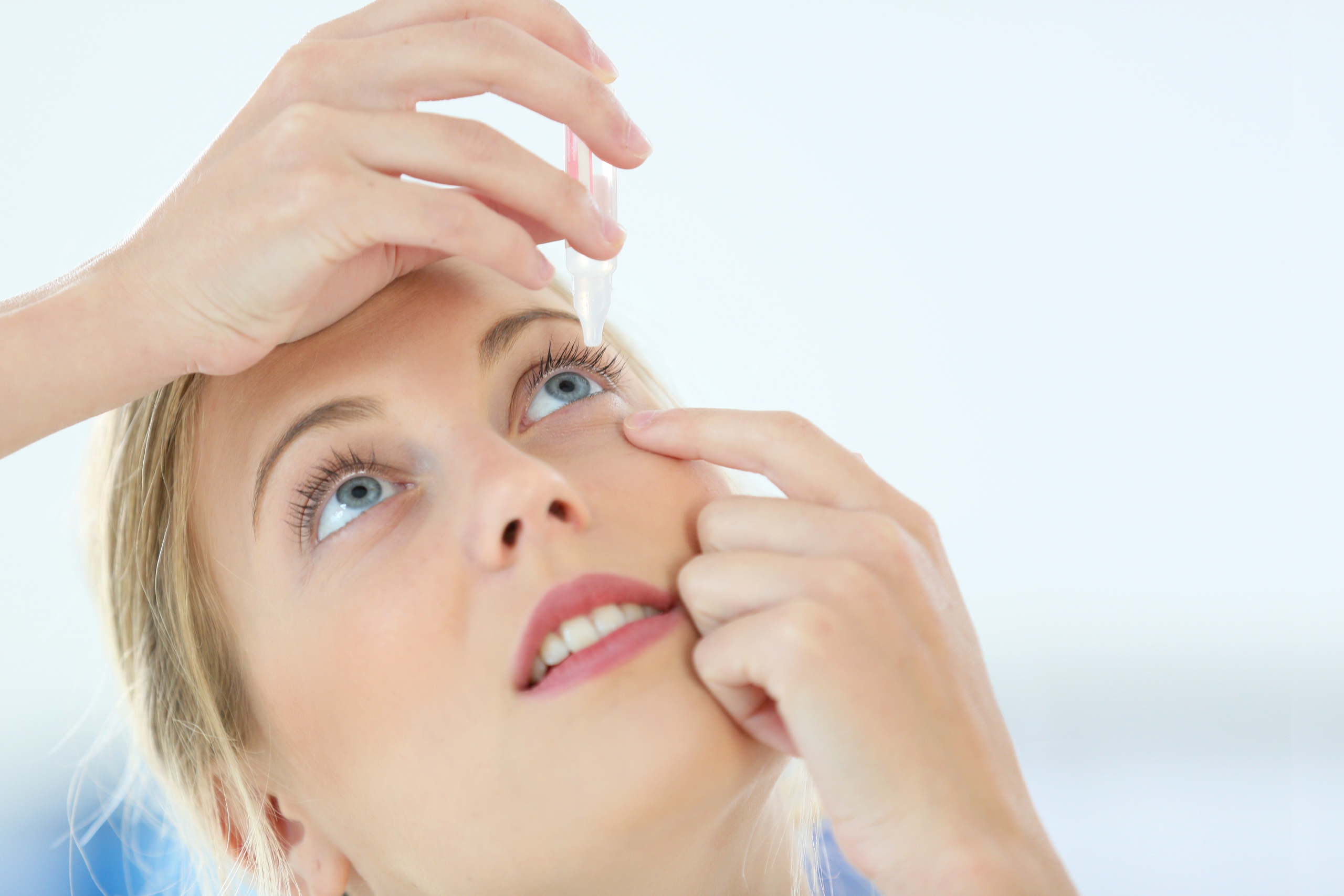« Dry eye syndrome is a multifactorial disorder of the tear film and ocular surface resulting in burning eyes, blurred vision, and an unstable tear film on the eye, which may damage the surface of the eyeball. It is accompanied by increased osmolarity of the tear film and inflammation of the ocular surface. »

Signs
Signs of dry eye syndrome are painful, burning, stinging, or itchy eyes, and clouded vision. The eyes tire quickly when reading or working with a computer screen.
The paradox: dry eyes shed tears
Paradoxically, one of the symptoms of dry eye syndrome is excessive tearing. To understand this phenomenon, one should know that there are two types of tears. Reflex tears are secreted when the eye is irritated; for example, when you have a strong emotion, are cutting an onion, or have a foreign body in the eye.
The tear film has a more complex structure, with an outer lipid layer, an aqueous median layer, and an inner mucous layer. This tear film normally lubricates the surface of the eye when we blink, or if we cover the eyeball with the eyelid for protection. Conversely, the dry eye presents an irregular tear film. Certain insufficiently lubricated areas of the cornea become irritated every time the eyelid slides over them. As a result, the eye sheds reflex tears in an attempt to produce lubrication that will allay irritation.
Causes
There are several reasons why the tear film may be unstable, causing eye dryness. The most common one is aging. Tear production usually diminishes as the years pass. Inflammation of the eyelid, or blepharitis, is another frequent cause.
Excessive heating or air conditioning may also lead to eye dryness. So can wearing contact lenses, working on a computer screen, or reading for a long period of time. Dry eye may also be a side effect of certain medications, such as antihistamines or birth-control pills. Allergies, vitamin deficiencies, and extremely dry weather may also cause the condition.
Treatment
Because so many different factors can cause dry eye syndrome, treatment may also vary from case to case:
- improvement of the environment: appropriate atmospheric humidity and ventilation, dusting, no smoking, etc.
- good work habits: take breaks regularly, and do blinking exercises.
- diet: supplement with Omega 3 (several types are available on the market) and decrease consumption of alcohol and coffee, both of which are diuretics.
- artificial tears: they temporarily relieve the symptoms of dry eye, but do not treat the cause of the disorder. A great variety is available, at different degrees of viscosity, depending on needs.
- eyelid hygiene: reduces chronic anterior blepharitis meibomian gland dysfunction (MGD) which causes posterior blepharitis.
- anti-inflammatory treatment: topical steroids or cyclosporine-A may sometimes be useful.
- doxycycline: at low doses (20 or 40 mg) possesses anti-inflammatory properties that are beneficial to meibomian function.
- increase tear retention time: by temporary or permanent occlusion of the tear duct.
OPHTHALMOLOGY CENTER
Ophthalmological consultation and treatment center located next to Place de Paris, in Luxembourg.
Dr Christian Eulufi
Dr Tom Pavant
Dr Carla Schmartz
Dr Philippine Delvaulx
Dr Mihaela Dilion
USEFUL INFORMATION
34, avenue de la Liberté
L-1930 Luxembourg
Opening time
Monday, Tuesday, Thursday and Friday: 8 a.m. to 12 p.m. and 1:30 p.m. to 5 p.m.
Wednesday: 8 a.m. to 12 p.m.
MAKE AN APPOINTMENT
By phone at +352 28 86 72
Monday to Friday 8 a.m. to 12 p.m. and 1:30 p.m. to 3 p.m., except Wednesday afternoon
By email by writing to [email protected]
Comprehensive care for the patient

